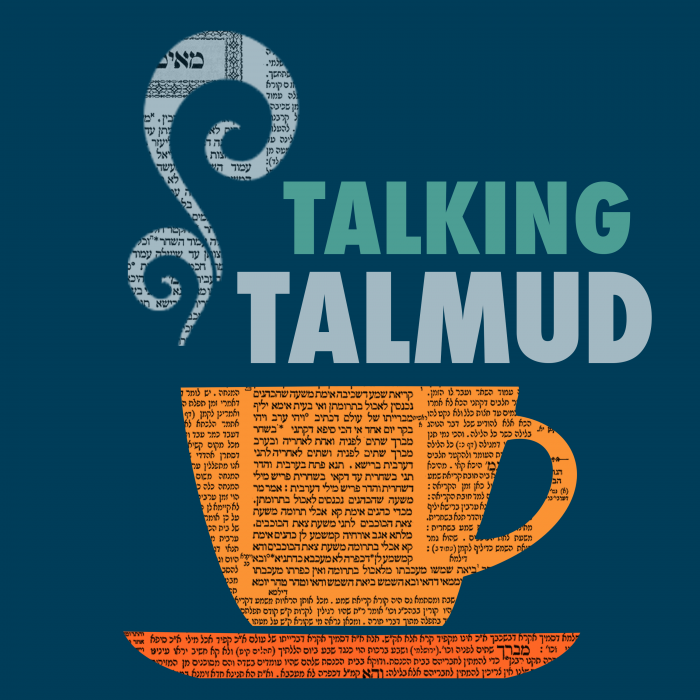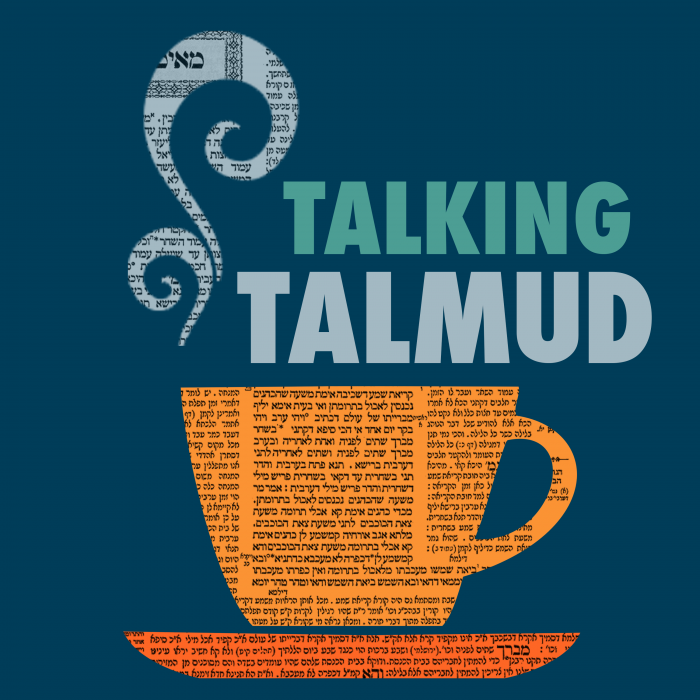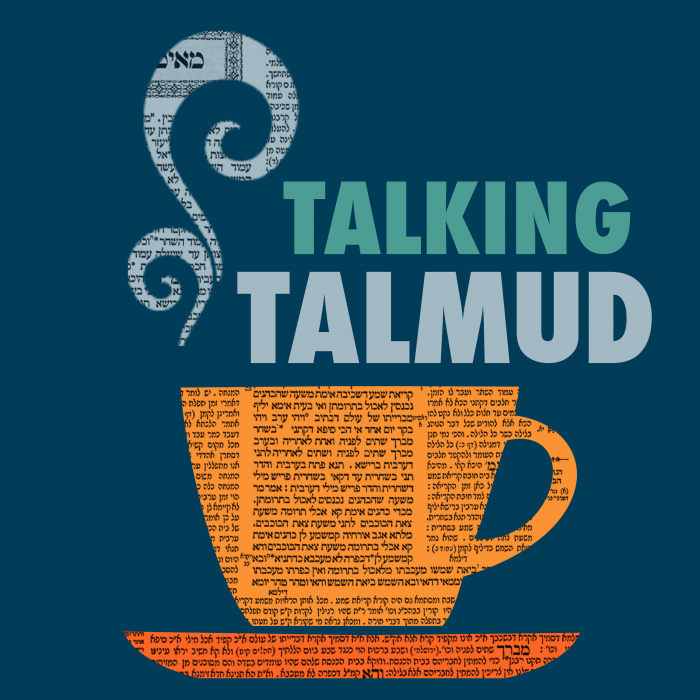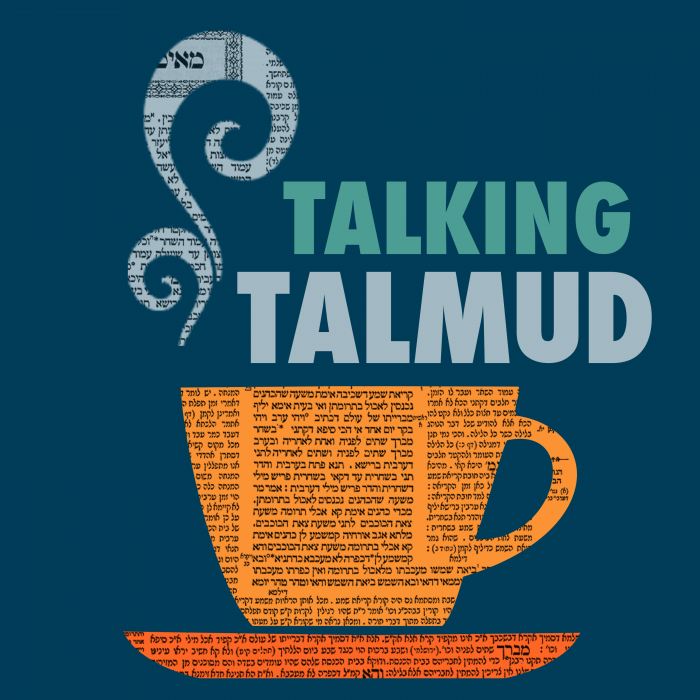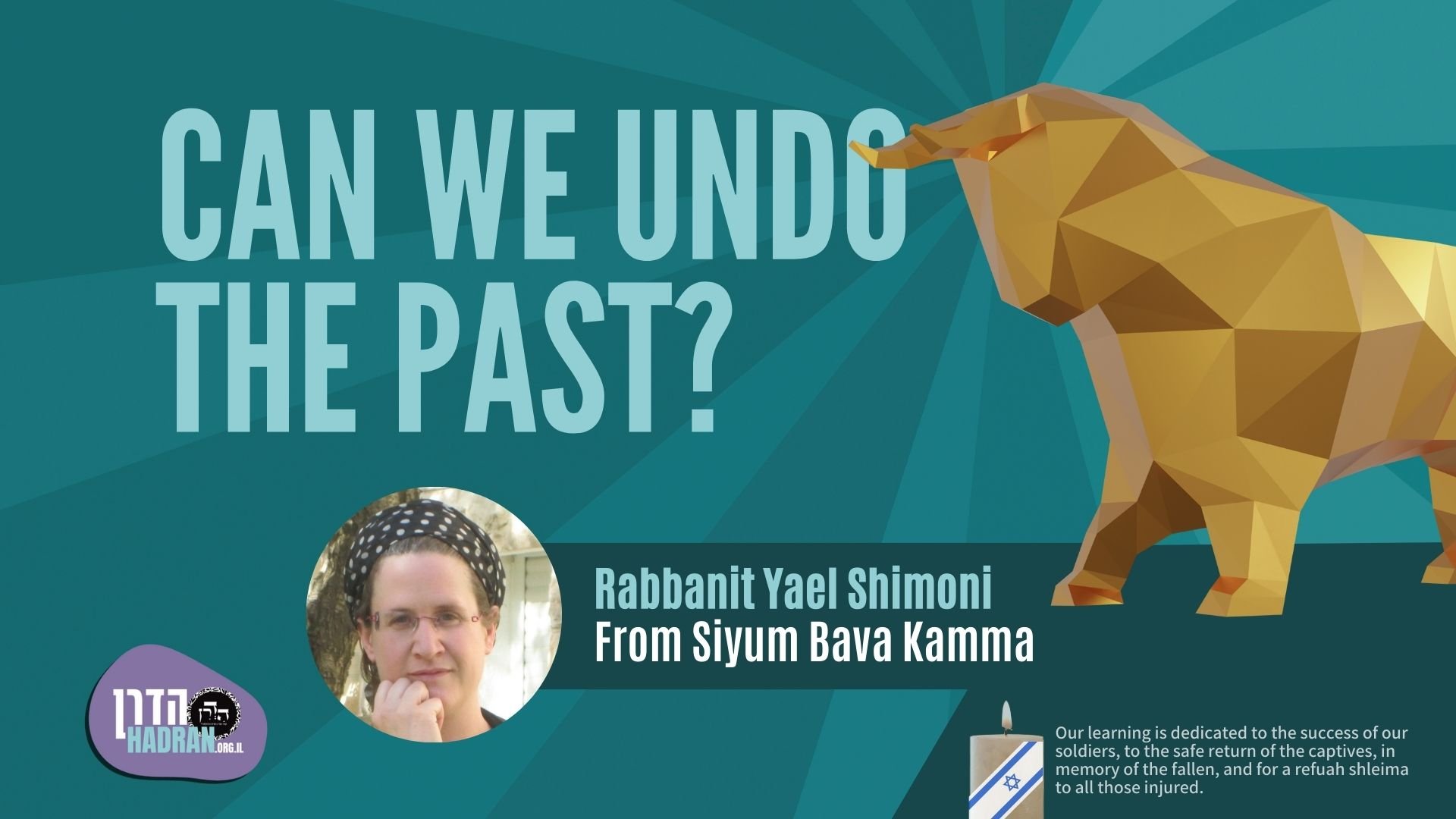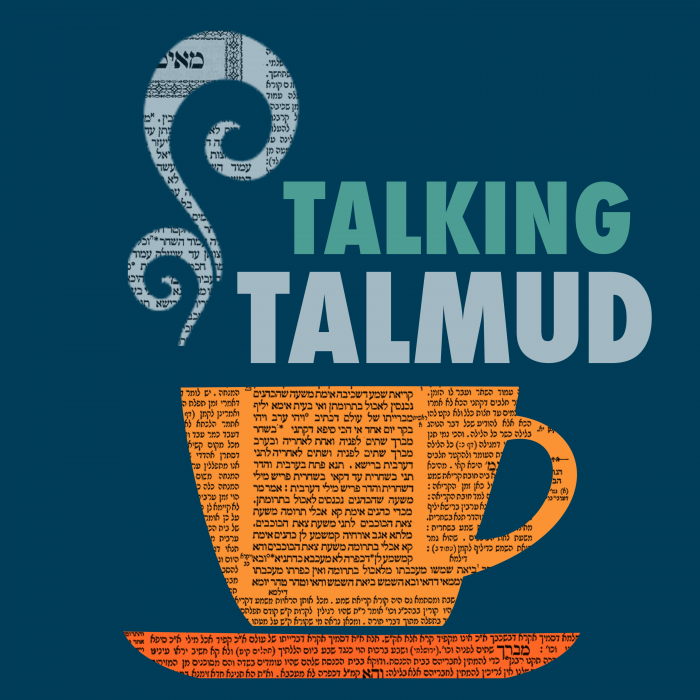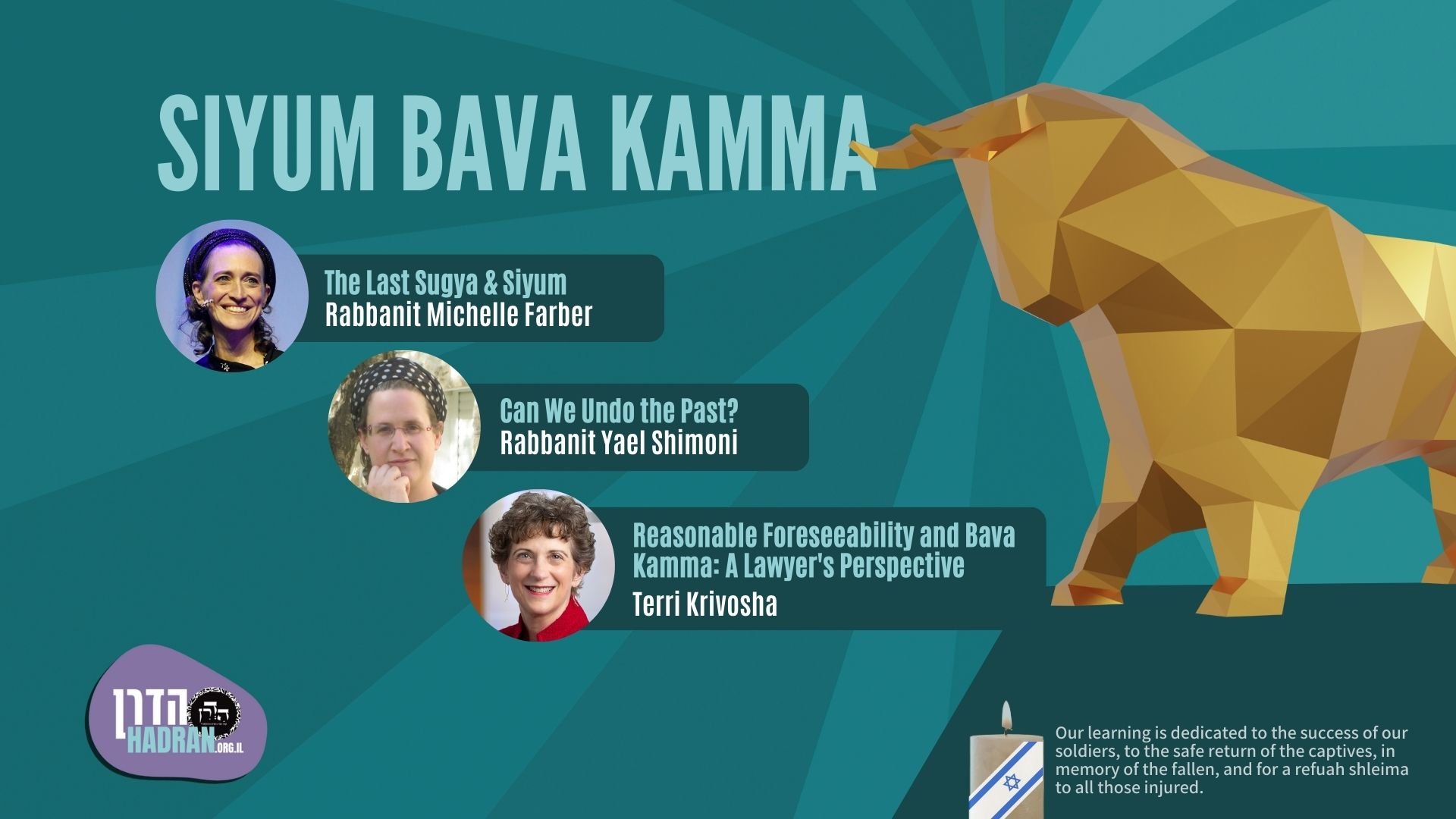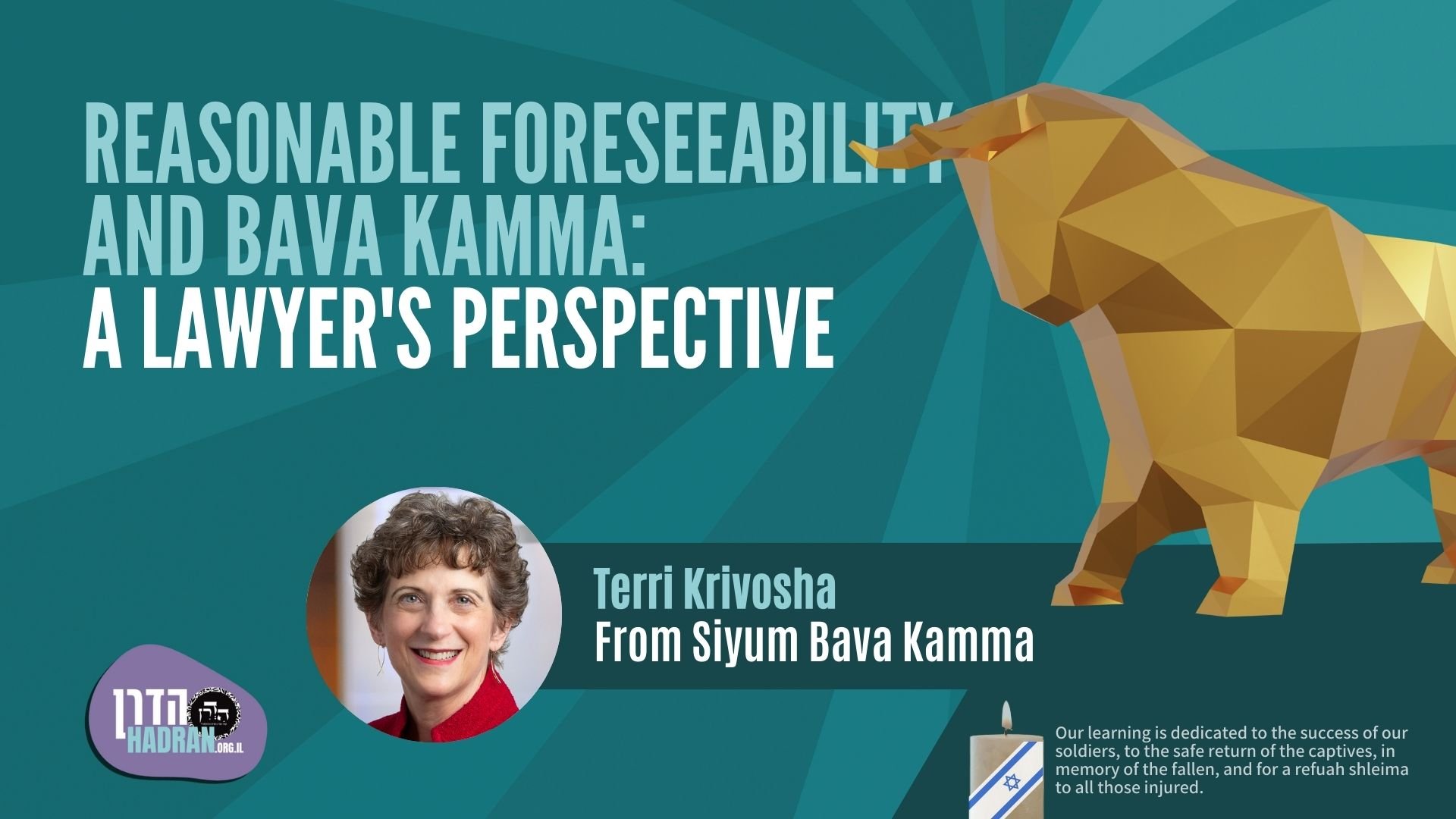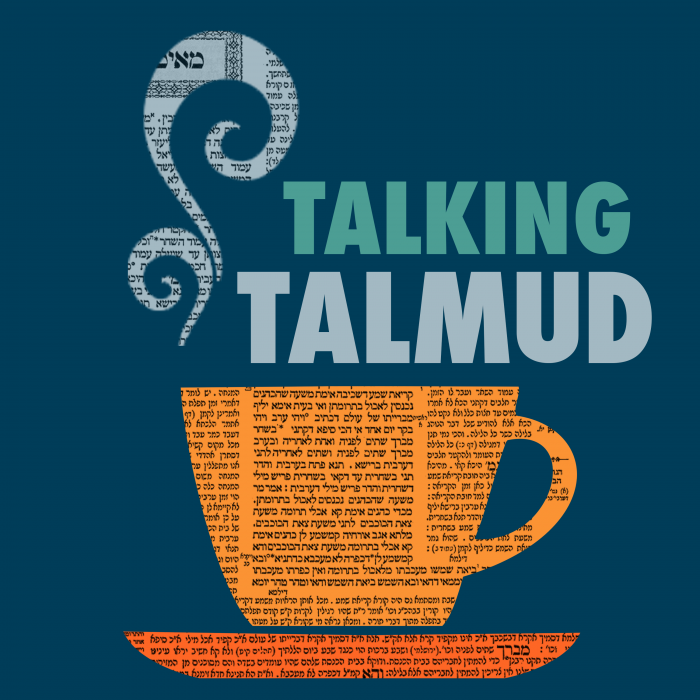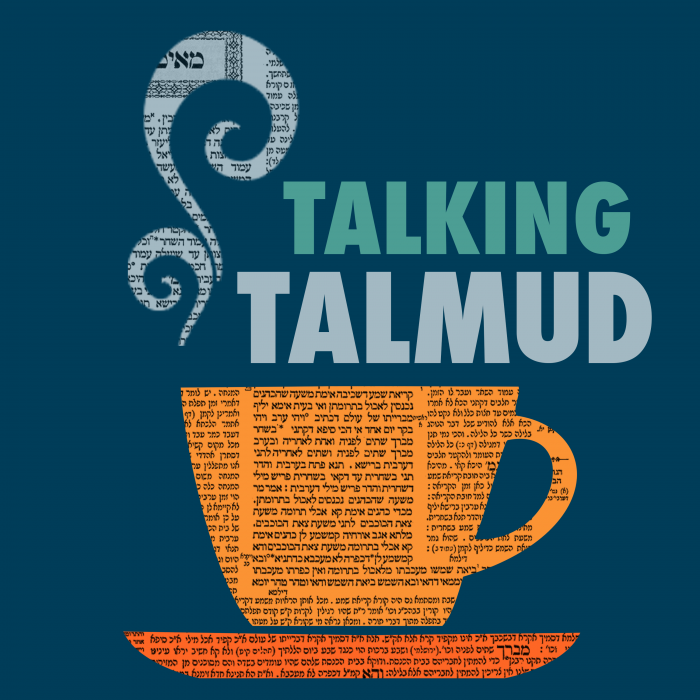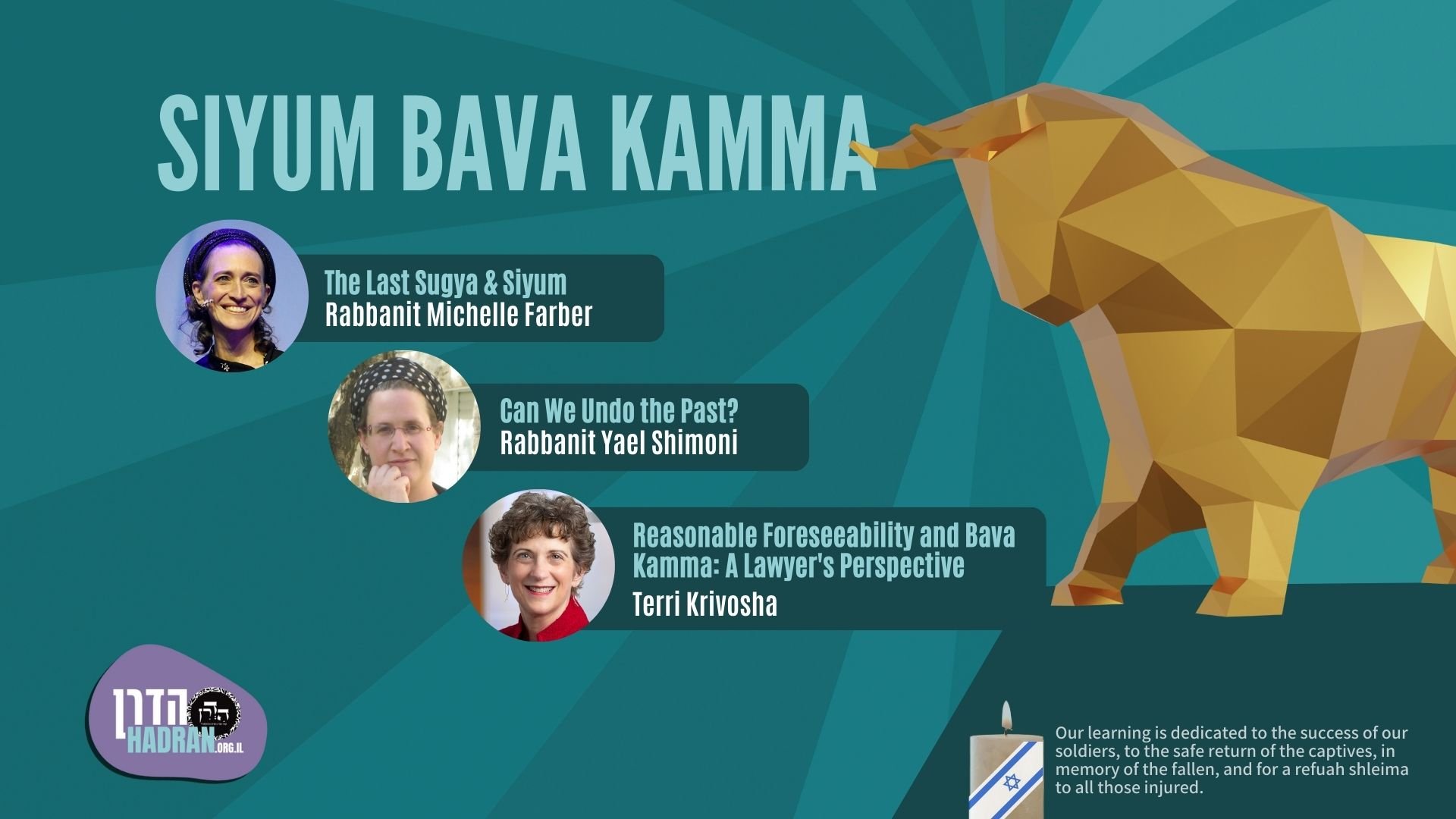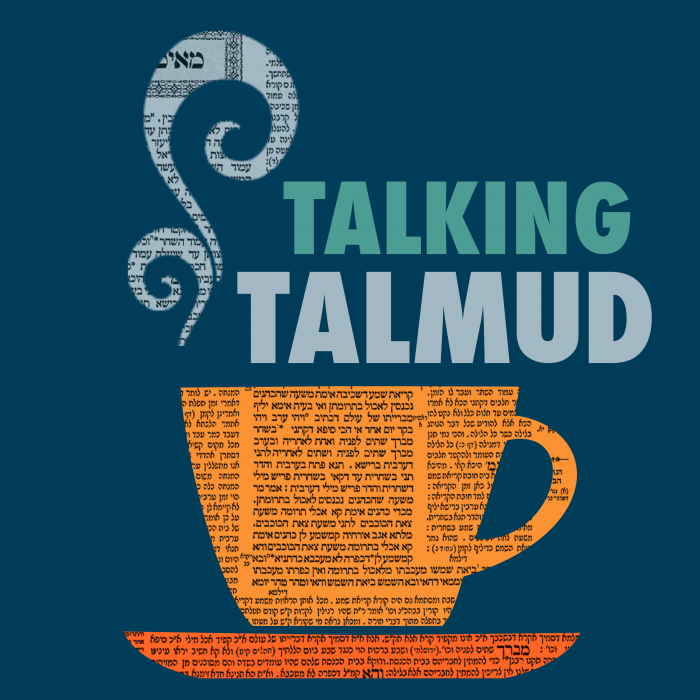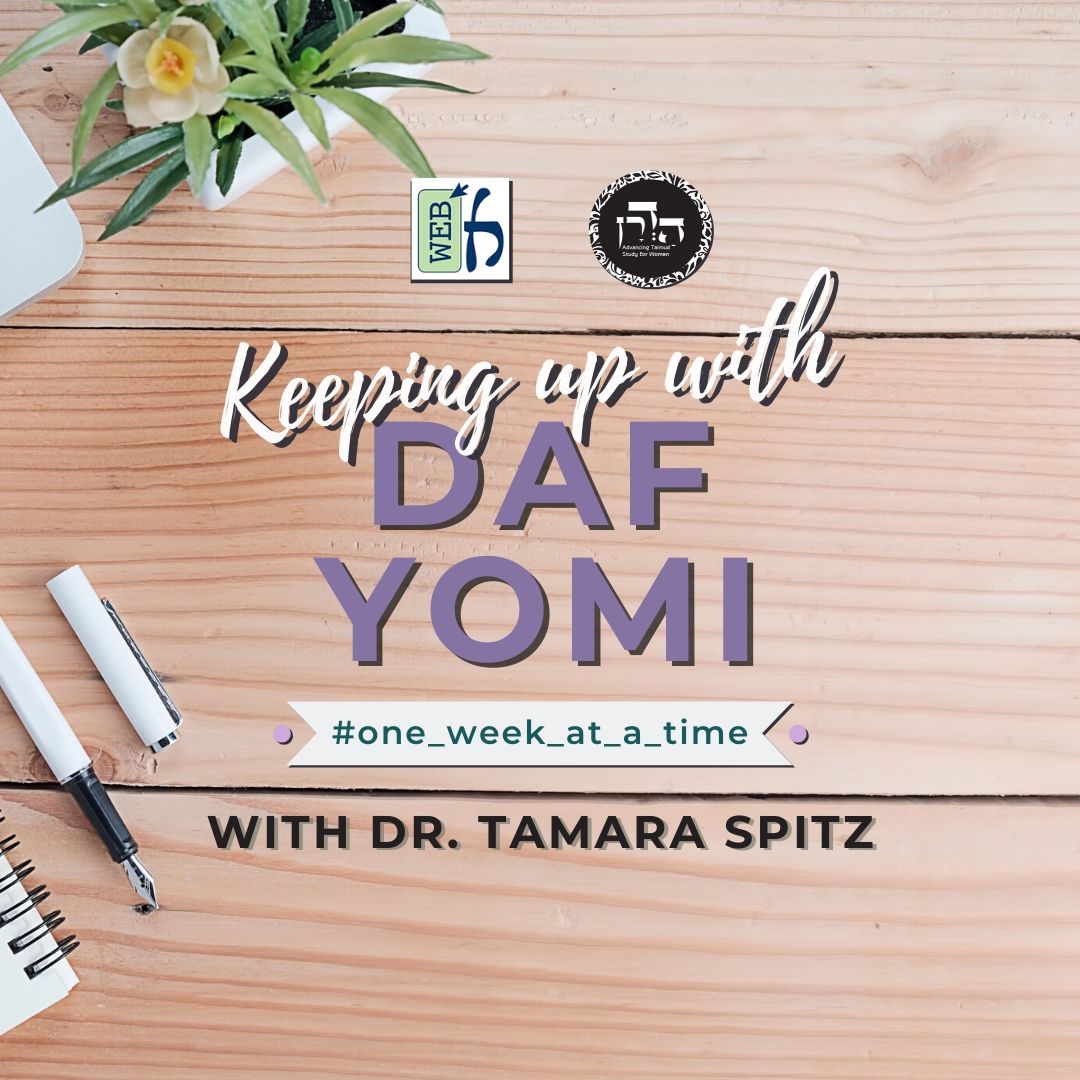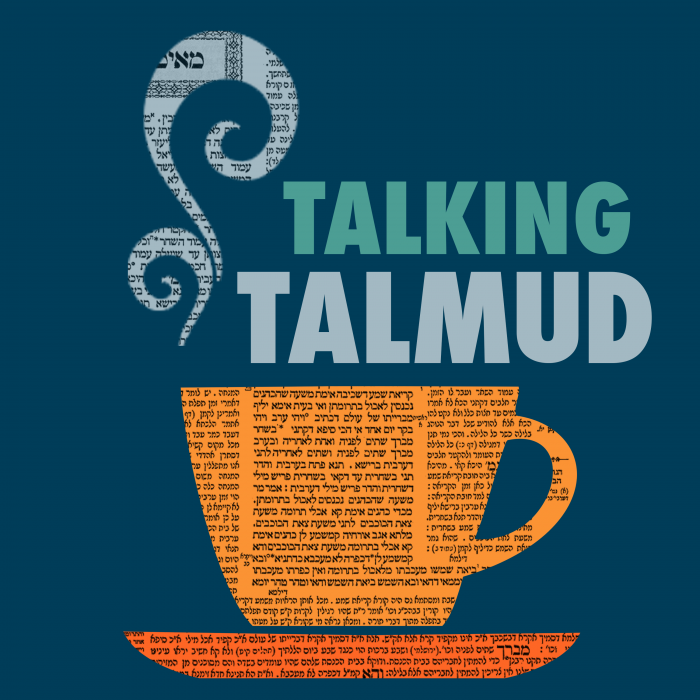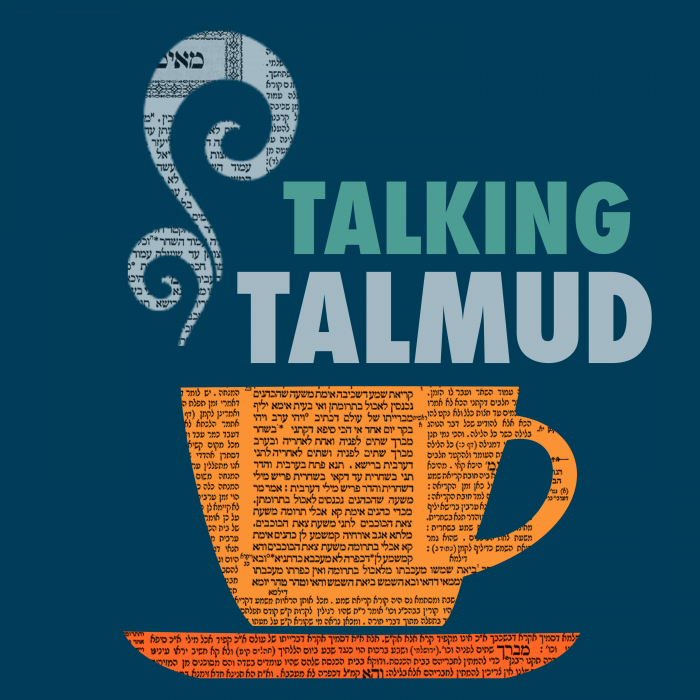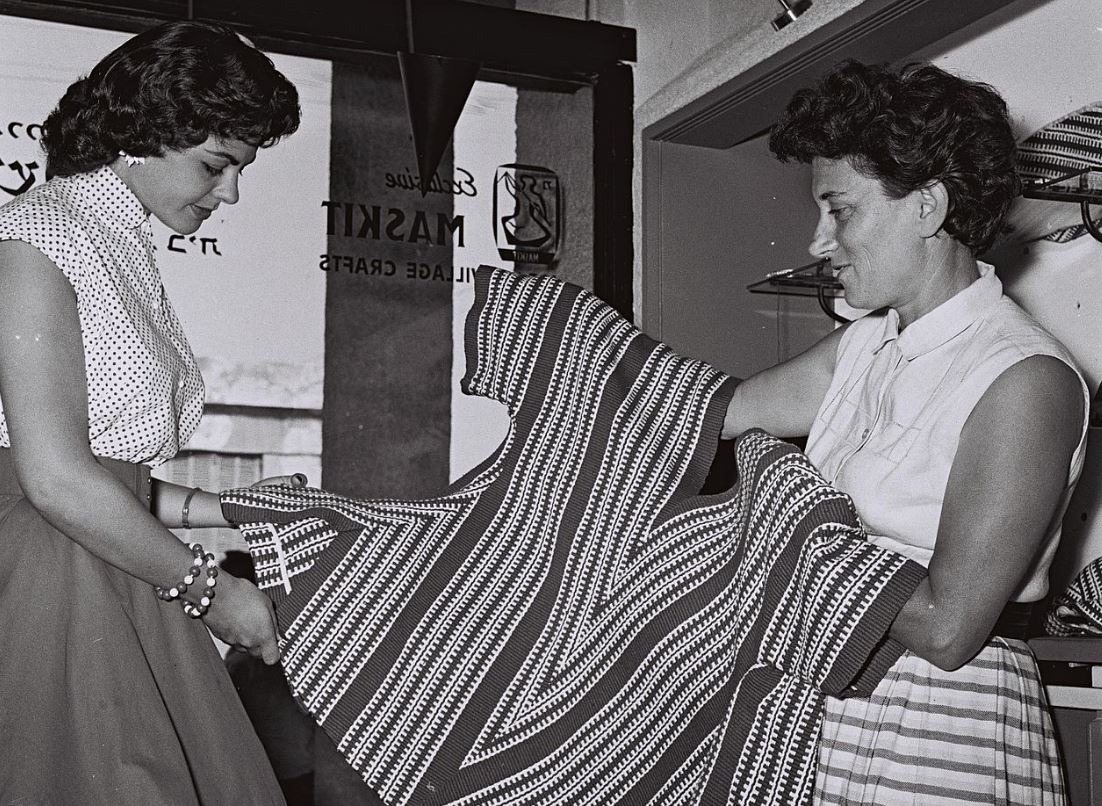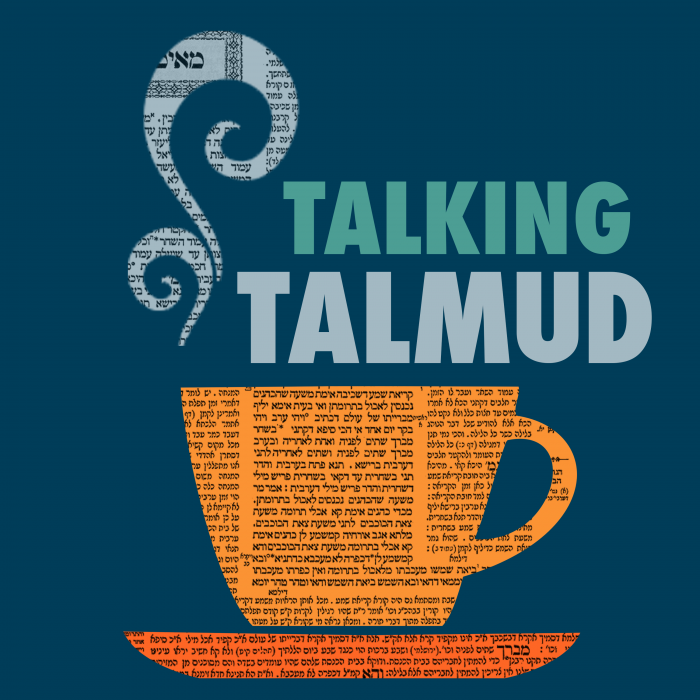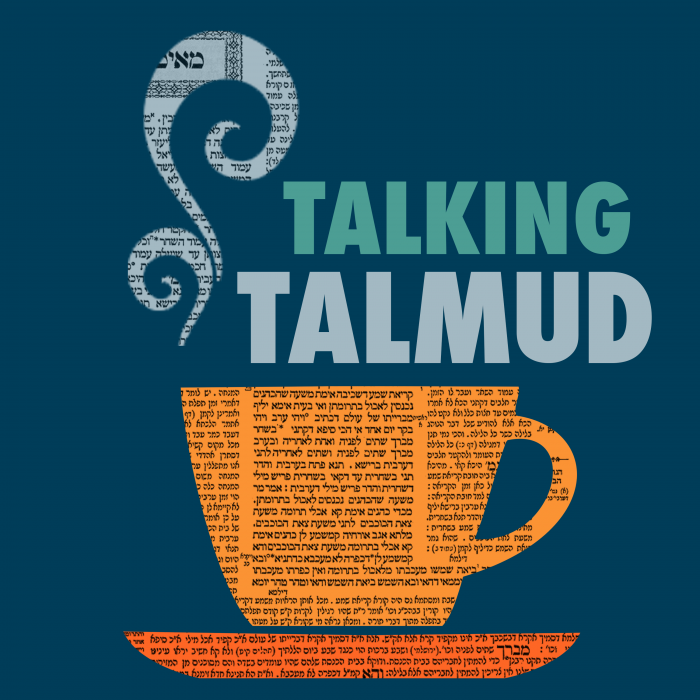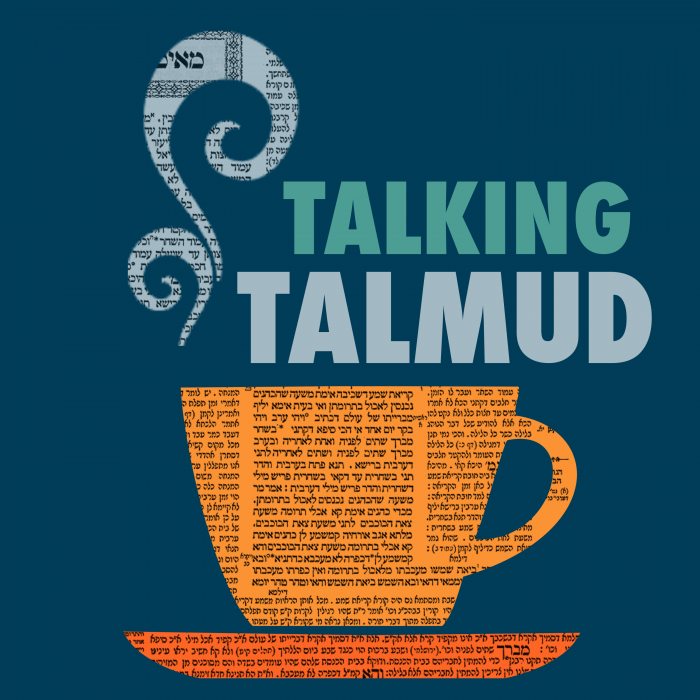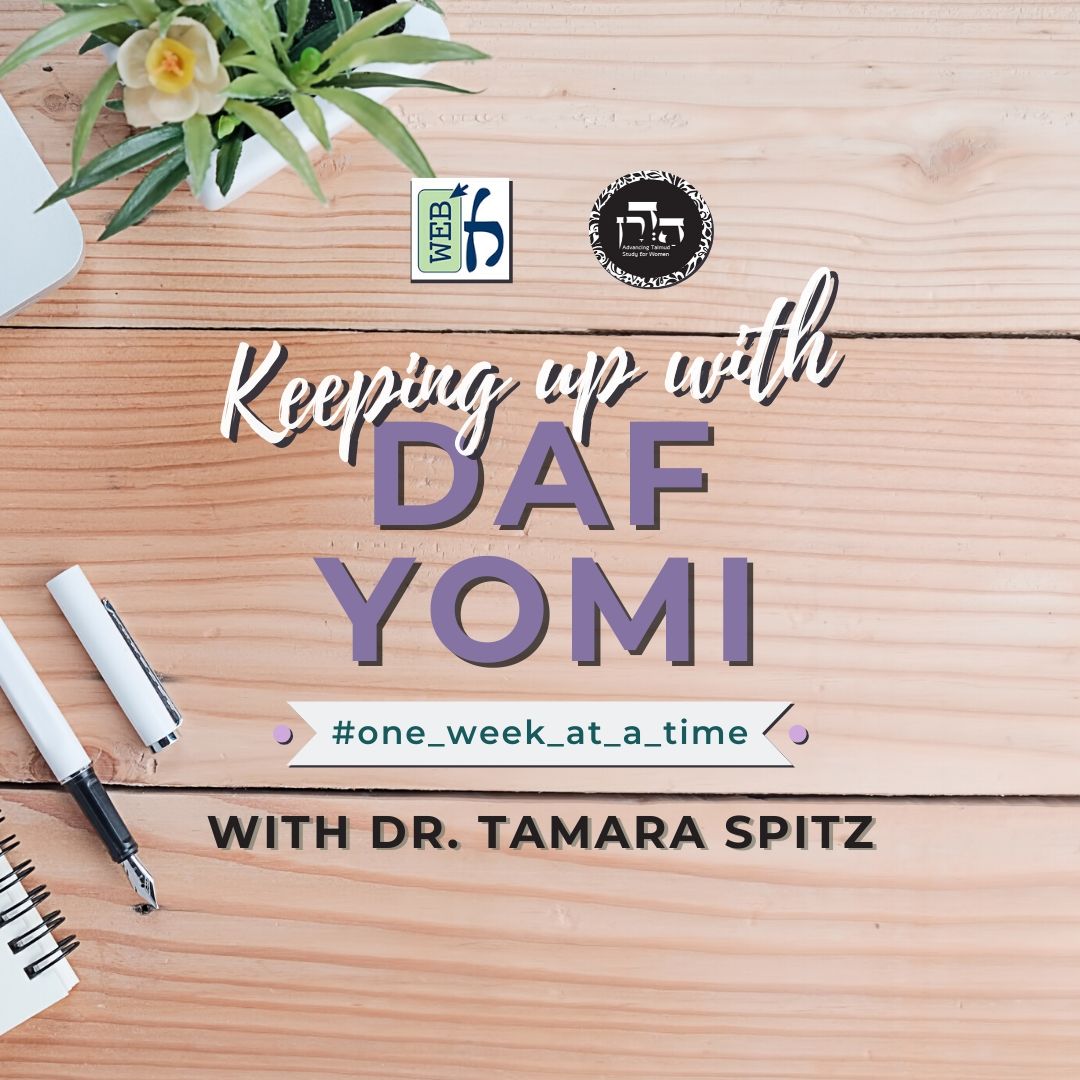Rava said that the word “se – sheep” in the Torah comes to exclude mixed breeds. To what halakha was this statement referring to? If one took upon oneself to bring a sacrifice of a burnt offering (“harei alai olah“), designated a bull and then someone stole it, does the thief have to replace it with a bull or can the thief replace it with a sheep or bird as the original owner can give one of those as an offering to fulfill their commitment? If a thief did not completely sell the animal or did not do a proper slaughter, there is no four/five payment. There are four different opinions regarding what part of the animal the thief would leave for him/herself which would render the animal still partially owned by the thief, thereby exempting the thief from the four/five payment. There are contradictory braitot regarding partners who stole and animal and one of them sold it – one says the one who sold it is liable and the other, exempt. How does Rav Nachman resolve this contradiction? Rav Yirmia and Rav Papa ask more questions regarding cases of partial sales of the animals. Their questions are left unanswered.
Bava Kamma
Masechet Bava Kamma is sponsored by the Futornick Family in loving memory of their fathers and grandfathers, Phillip Kaufman and David Futornick.
This week’s learning is sponsored by Robert and Paula Cohen in loving memory of Joseph Cohen, Yosef ben Moshe HaCohen, z”l. “He was hard working, loved to sing, esp. as a chazan, and was very dedicated to his family and community.”
Want to dedicate learning? Get started here:


Today’s daily daf tools:
Bava Kamma
Masechet Bava Kamma is sponsored by the Futornick Family in loving memory of their fathers and grandfathers, Phillip Kaufman and David Futornick.
This week’s learning is sponsored by Robert and Paula Cohen in loving memory of Joseph Cohen, Yosef ben Moshe HaCohen, z”l. “He was hard working, loved to sing, esp. as a chazan, and was very dedicated to his family and community.”
Today’s daily daf tools:
Delve Deeper
Broaden your understanding of the topics on this daf with classes and podcasts from top women Talmud scholars.
New to Talmud?
Check out our resources designed to help you navigate a page of Talmud – and study at the pace, level and style that fits you.
The Hadran Women’s Tapestry
Meet the diverse women learning Gemara at Hadran and hear their stories.
Bava Kamma 78
הָא גַּבֵּי קֳדָשִׁים נָמֵי נֶאֱמַר: ״שׁוֹר אוֹ כֶשֶׂב״ – שֶׁאֵין אַתָּה יָכוֹל לְהוֹצִיא כִּלְאַיִם מִבֵּינֵיהֶם, וּנְרַבֵּי! מִדְּסֵיפָא לְמַעֵט, רֵישָׁא נָמֵי לְמַעֵט. אַדְּרַבָּה; מִדְּרֵישָׁא לְרַבּוֹת, סֵיפָא נָמֵי לְרַבּוֹת!
The Gemara asks: But with regard to sacrificial animals it is also stated in the first part of the verse: “A bull or a sheep” (Leviticus 22:27), which are two animals from which you cannot produce diverse kinds. And accordingly, let us include an animal of diverse kinds as being fit for sacrifice on the altar on that account. The Gemara answers: From the fact that the latter clause of the verse: “Or a goat,” serves to exclude a type of animal from being fit for sacrifice on the altar, it may be inferred that the first clause: “A bull or a sheep,” also serves to exclude a type of animal from being fit for sacrifice on the altar. The Gemara asks: On the contrary, one could equally argue that from the fact that the first clause of the verse serves to include a type of animal as being fit for sacrifice on the altar, the latter clause also serves to include a type of animal as being fit for sacrifice on the altar.
הַאי מַאי? אִי אָמְרַתְּ בִּשְׁלָמָא לְמַעֵט – הוּא דְּאִיצְטְרִיךְ תְּרֵי מִיעוּטֵי; דְּאַף עַל גַּב דְּאִימַּעַט כִּלְאַיִם, אִיצְטְרִיךְ לְמַעוֹטֵי נִדְמֶה. אֶלָּא אִי אָמְרַתְּ לְרַבּוֹת – תְּרֵי רִיבּוּיֵי לְמָה? הַשְׁתָּא כִּלְאַיִם אִירַבִּי לֵיהּ, נִדְמֶה מִבַּעְיָא?!
The Gemara rejects this argument: What is this comparison? Granted, if you say that both expressions serve to exclude types of animals from being fit for sacrifice on the altar, this is why two exclusions were necessary: One exclusion is referring to diverse kinds and the other is referring to an animal that resembles another species, as even though an animal of diverse kinds is excluded, it was still necessary to exclude an animal that resembles another. But if you say that both phrases serve to include types of animals as being fit for sacrifice on the altar, why are two inclusions required? Now that an animal of diverse kinds has been included, in the first inclusion, is it necessary to say that an animal that resembles another is also included? There is more justification for including an animal that resembles another, whose parentage is entirely of one species, than for including an animal of diverse kinds.
אֶלָּא הָא דְּאָמַר רָבָא: זֶה בָּנָה אָב – כׇּל מָקוֹם שֶׁנֶּאֱמַר ״שֶׂה״, אֵינוֹ אֶלָּא לְהוֹצִיא אֶת הַכִּלְאַיִם; לְמַאי הִלְכְתָא? אִי לְקָדָשִׁים, בְּהֶדְיָא כְּתִיב בְּהוּ ״שׁוֹר אוֹ כֶשֶׂב״ – פְּרָט לְכִלְאַיִם!
The Gemara has established that when the Torah uses the word seh (Exodus 21:37) in the context of theft it does not serve to exclude animals of diverse kinds. The Gemara asks: If so, what is meant by this statement that Rava says with regard to the verse: “The ox, the seh of a sheep, and the seh of a goat” (Deuteronomy 14:4), that this establishes a paradigm for other cases, teaching that wherever the word seh is stated in the Torah, it serves to exclude only an animal of diverse kinds. With regard to what halakha did Rava state this principle? If this principle is referring to the halakha concerning sacrificial animals, it is written explicitly with regard to them: “A bull or a sheep” (Leviticus 22:27), which, as taught in the aforementioned baraita, serves to exclude diverse kinds.
אִי לְמַעֲשֵׂר, ״תַּחַת״–״תַּחַת״ יָלֵיף, מִקֳּדָשִׁים!
If this principle is referring to the halakha concerning animal tithe, concerning which it is written: “And all the tithe of the herd or the flock [tzon], any one that passes under the rod, the tenth shall be sacred unto the Lord” (Leviticus 27:32), this principle is not necessary either. The reason is that the exclusion of diverse kinds can be derived by means of a verbal analogy from the term “under” in this verse, and the word “under” in a verse that deals with sacrificial animals: “When a bull, or a sheep, or a goat is born, it shall be seven days under its mother” (Leviticus 22:27). This verbal analogy, from which many halakhot of animal tithe are derived, indicates that diverse kinds are not subject to animal tithe, just as they cannot be used for an offering.
אִי לִבְכוֹר, ״הַעֲבָרָה״–״הַעֲבָרָה״ יָלֵיף, מִמַּעֲשֵׂר!
If this principle is referring to firstborn animals, concerning which it is written: “However, the firstborn among animals, which is born as a firstling to the Lord, no man shall sanctify it; whether it be ox or seh, it is the Lord’s” (Leviticus 27:26), it is not necessary in that context either. The reason is that this can be derived by a verbal analogy between the term passing, in the verse: “And you shall cause to pass to the Lord all that open the womb” (Exodus 13:12), and the same term passing, from a verse concerning animal tithe: “And all the tithe of the herd or the flock, any one that passes under the rod, the tenth shall be sacred unto the Lord” (Leviticus 27:32). This verbal analogy teaches that if the firstborn of a ewe or a she-goat is an animal of diverse kinds it is not considered a firstborn with regard to the halakhot of firstborn animals, which means that Rava’s principle is not necessary here.
אִי נָמֵי, נִדְמֶה אָמְרַתְּ לָא – דִּכְתִיב: ״אַךְ בְּכוֹר שׁוֹר״ – עַד שֶׁיְּהֵא הוּא שׁוֹר וּבְכוֹרוֹ שׁוֹר; כִּלְאַיִם מִבַּעְיָא?
Alternatively, you must say that an animal that resembles another is not subject to the halakhot of a firstborn, as it is written: “But the firstborn of a bull, or the firstborn of a sheep, or the firstborn of a goat, you shall not redeem; they are holy” (Numbers 18:17). This indicates that the halakhot of the firstborn are not applicable unless the fathering animal is a bull and its firstborn is also a bull. This excludes an animal that resembles another species, rather than its father. Once it is established that an animal that resembles another is not subject to the halakhot of a firstborn, is it necessary for the Torah to state the same with regard to diverse kinds? Since it is evident that firstborn status does not apply to diverse kinds, Rava’s principle is not required here either.
אֶלָּא כִּי אִיתְּמַר דְּרָבָא – לְעִנְיַן פֶּטֶר חֲמוֹר. כְּדִתְנַן: אֵין פּוֹדִין לֹא בְּעֵגֶל וְלֹא בְּחַיָּה וְלֹא בִּשְׁחוּטָה וְלֹא בִּטְרֵיפָה וְלֹא בְּכִלְאַיִם וְלֹא בְּכוֹי.
Rather, Rava’s principle was stated with regard to the redemption of a firstborn donkey, concerning which it is written: “And every firstborn of a donkey you shall redeem with a seh” (Exodus 13:13), as we learned in a mishna (Bekhorot 12a): One may not redeem a firstborn donkey neither with a calf, nor with a non-domesticated animal, nor with a slaughtered animal, nor with a tereifa animal, nor with diverse kinds, i.e., a sheep-goat hybrid, nor with a koy. Rava’s principle is referring to the source for the prohibition against using an animal of diverse kinds for the redemption of a firstborn donkey.
וּלְרַבִּי אֶלְעָזָר דְּמַתִּיר בְּכִלְאַיִם – דִּתְנַן: רַבִּי אֶלְעָזָר מַתִּיר בְּכִלְאַיִם מִפְּנֵי שֶׁהוּא שֶׂה, לְמַאי הִלְכְתָא?
The Gemara asks: But what about according to the opinion of Rabbi Elazar, who disagrees with this ruling and permits the use of an animal of diverse kinds for the redemption of a firstborn donkey? As we learned in the same mishna: Rabbi Elazar permits diverse kinds for use in the redemption of a firstborn donkey because it is considered a seh. Accordingly, with regard to what halakha is Rava’s principle relevant?
אָמַר לָךְ רַבִּי אֶלְעָזָר: כִּי אִיתְּמַר דְּרָבָא – לְטָמֵא שֶׁנּוֹלַד מִן הַטָּהוֹר וְעִיבּוּרוֹ מִן הַטָּמֵא, וּדְלָא כְּרַבִּי יְהוֹשֻׁעַ; דְּאִי רַבִּי יְהוֹשֻׁעַ, מִ״שֵּׂה כְשָׂבִים וְשֵׂה עִזִּים״ נָפְקָא לֵיהּ – עַד שֶׁיְּהֵא אָבִיו כֶּבֶשׂ וְאִמּוֹ כִּבְשָׂה.
Rabbi Elazar could have said to you: Rava’s principle was stated with regard to a non-kosher animal that was born from a kosher mother, whose impregnation was from a non-kosher animal. Rava is saying that this animal is not kosher. And this is not in accordance with the opinion of Rabbi Yehoshua, as, if it were in accordance with the opinion of Rabbi Yehoshua, although he would agree with this halakha, he derives this halakha (see Bekhorot 7a) from the phrase: “The seh of sheep [kevasim], and the seh of goats [izzim]” (Deuteronomy 14:4). The plural forms “kevasim” and “izzim” indicate that a lamb is not kosher unless both its father is a sheep and its mother is a ewe, and the same halakha applies to a kid.
וּטְהוֹרָה מִטְּמֵאָה מִי מִיעַבְּרָא?! אִין; דְּקַיְימָא לַן
The Gemara asks with regard to the case under discussion: But can a kosher animal become impregnated by a non-kosher animal in the first place? Is it even possible for this to occur? Why did Rabbi Yehoshua and Rava have to find a biblical source to deem this offspring as non-kosher? The Gemara answers: Yes, it is possible. As we maintain elsewhere (Bekhorot 7a)
דְּאִיעַבַּר מִקָּלוּט, כְּרַבִּי שִׁמְעוֹן.
that the mother animal became impregnated from an animal with non-cloven hooves that was born from a kosher mother and father. This is in accordance with the opinion of Rabbi Shimon, who maintains that the offspring resulting from this, which does not have cloven hooves, is not kosher. Since the animal’s father is not kosher according to the opinion of Rabbi Shimon, the offspring is also not kosher, in accordance with Rava’s principle.
בָּעֵי רָבָא: ״הֲרֵי עָלַי עוֹלָה״, וְהִפְרִישׁ שׁוֹר, וּבָא אַחֵר וְגָנַב; מִי פָּטַר גַּנָּב נַפְשֵׁיהּ בְּכֶבֶשׂ – לְרַבָּנַן, בְּעוֹלַת הָעוֹף – לְרַבִּי אֶלְעָזָר בֶּן עֲזַרְיָה? דִּתְנַן: ״הֲרֵי עָלַי עוֹלָה״ – יָבִיא כֶּבֶשׂ. רַבִּי אֶלְעָזָר בֶּן עֲזַרְיָה אוֹמֵר: יָבִיא תּוֹר אוֹ בֶּן יוֹנָה.
Rava raises a dilemma: With regard to one who says: It is incumbent upon me to bring a burnt–offering, and he subsequently set aside a bull for this purpose, and another person came and stole the bull, can the thief exempt himself from liability by repaying the owner with a sheep, according to the opinion of the Rabbis, or by repaying him with a bird to be used as a bird burnt-offering, according to the opinion of Rabbi Elazar ben Azarya? This is as we learned in a mishna (Menaḥot 107a): If one says: It is incumbent upon me to bring a burnt–offering, he must bring a bull or a sheep as a burnt-offering to fulfill his vow. Rabbi Elazar ben Azarya says: He may even bring a turtledove or a young pigeon as a burnt-offering.
מַאי? מִי אָמְרִינַן: שֵׁם עוֹלָה קַבֵּיל עִילָּוֵיהּ; אוֹ דִלְמָא, מָצֵי אֲמַר לֵיהּ: אֲנָא מִצְוָה מִן הַמּוּבְחָר בָּעֵינָא לְמֶיעְבַּד?
Rava elaborates: What is the halakha in this case? Do we say that he accepted upon himself to sacrifice an animal with the status of a burnt-offering, in which case any animal that fulfills this requirement will suffice? If so, the thief may compensate the owner with a sheep or bird, as the owner can sacrifice that animal as a burnt-offering. Or perhaps the owner can say to the thief: I want to perform the mitzva in the optimal manner, which is by sacrificing a bull. Therefore, you must pay me back with a bull.
בָּתַר דְּאִיבַּעְיָא, הֲדַר פַּשְׁטַהּ: גַּנָּב פֹּטֵר עַצְמוֹ בְּכֶבֶשׂ לְרַבָּנַן, בְּעוֹלַת הָעוֹף לְרַבִּי אֶלְעָזָר בֶּן עֲזַרְיָה.
After he raised the dilemma, Rava himself subsequently resolved it: The thief can exempt himself from liability by repaying the owner with a sheep, according to the opinion of the Rabbis, or by repaying him with a bird to be used as a bird burnt-offering, according to the opinion of Rabbi Elazar ben Azarya.
רַב אַחָא בְּרֵיהּ דְּרַב אִיקָא מַתְנֵי לַהּ בְּהֶדְיָא – אָמַר רָבָא: ״הֲרֵי עָלַי עוֹלָה״ וְהִפְרִישׁ שׁוֹר, וּבָא אַחֵר וּגְנָבוֹ – פֹּטֵר עַצְמוֹ בְּכֶבֶשׂ לְרַבָּנַן, וּבְעוֹלַת הָעוֹף לְרַבִּי אֶלְעָזָר בֶּן עֲזַרְיָה.
Rav Aḥa, son of Rav Ika, teaches this halakha explicitly, i.e., without the question-and-answer format: Rava says: With regard to one who says: It is incumbent upon me to bring a burnt–offering, and he subsequently set aside a bull for this purpose, and another person came and stole the bull, the thief can exempt himself from liability by repaying the owner with a sheep, according to the opinion of the Rabbis, or by repaying him with a bird to be used as a bird burnt-offering, according to the opinion of Rabbi Elazar ben Azarya.
מַתְנִי׳ מְכָרוֹ חוּץ מֵאֶחָד מִמֵּאָה שֶׁבּוֹ, אוֹ שֶׁהָיְתָה לוֹ בּוֹ שׁוּתָּפוּת; הַשּׁוֹחֵט וְנִתְנַבְּלָה בְּיָדוֹ, הַנּוֹחֵר, וְהַמְעַקֵּר – מְשַׁלֵּם תַּשְׁלוּמֵי כֶפֶל, וְאֵינוֹ מְשַׁלֵּם תַּשְׁלוּמֵי אַרְבָּעָה וַחֲמִשָּׁה.
MISHNA: If a thief sold a stolen animal in a partial fashion, e.g., except for one one-hundredth of it, which he kept for himself; or if he had a partnership in owning the animal before stealing it; or in the case of a thief who slaughtered the stolen animal and it became non-kosher meat in his hand because he slaughtered it improperly; or in the case of a thief who ripped open the animal rather than slaughtering it halakhically; or in the case of a thief who tore loose the gullet or windpipe of the animal as he slaughtered it, rendering the slaughter invalid, in all these cases he pays the double payment but does not pay the fourfold or fivefold payment. The fourfold or fivefold payment applies only if the animal is entirely sold or if it is slaughtered in accordance with the halakhic definition of animal slaughter.
גְּמָ׳ מַאי ״חוּץ מֵאֶחָד מִמֵּאָה שֶׁבּוֹ״? אָמַר רַב: חוּץ מִדָּבָר הַנִּיתָּר עִמּוֹ בִּשְׁחִיטָה. וְלֵוִי אָמַר: חוּץ מִגִּיזּוֹתֶיהָ. וְכֵן תַּנְיָא בְּמַתְנִיתָא: חוּץ מִגִּיזּוֹתֶיהָ.
GEMARA: What does the mishna mean when it states that the thief sold the animal except for one one-hundredth of it? Which part of the animal must the thief keep for himself for him to be exempt from the fourfold or fivefold payment? Rav says: The mishna means that he sold it except for some part of the animal that becomes permitted through its slaughter. This does not apply to horns or a sheep’s fleece, which do not require slaughter in order to be used. And Levi says: The mishna’s statement applies even if the thief sold the entire animal except for its fleece. And it is likewise taught in a baraita: The thief is exempt even if he sells the whole animal except for its fleece.
מֵיתִיבִי: מְכָרָהּ חוּץ מִיָּדָהּ, חוּץ מֵרַגְלָהּ, חוּץ מִקַּרְנָהּ, חוּץ מִגִּיזּוֹתֶיהָ – אֵינוֹ מְשַׁלֵּם תַּשְׁלוּמֵי אַרְבָּעָה וַחֲמִשָּׁה. רַבִּי אוֹמֵר: דָּבָר הַמְעַכֵּב בִּשְׁחִיטָה – אֵינוֹ מְשַׁלֵּם תַּשְׁלוּמֵי אַרְבָּעָה וַחֲמִשָּׁה,
The Gemara raises an objection to the opinion of Rav from a baraita: If the thief sold the whole animal except for its foreleg, or except for its hind leg, or except for its horn, or except for its fleece, he does not pay the fourfold or fivefold payment. Rabbi Yehuda HaNasi says: If the thief sells the animal except for some part of it whose absence invalidates its slaughter, he does not pay the fourfold or fivefold payment.
וְשֶׁאֵינוֹ מְעַכֵּב בִּשְׁחִיטָה – מְשַׁלֵּם תַּשְׁלוּמֵי אַרְבָּעָה וַחֲמִשָּׁה.
Rabbi Yehuda HaNasi continues: But if he leaves out from the sale a part of the animal whose absence does not invalidate the slaughter, he pays the fourfold or fivefold payment. If an animal is missing one of its vital organs, e.g., its liver, one of its intestines, its gullet, or its windpipe, it is considered already dead and its slaughter at this stage would be invalid. For the thief to be exempt from the fourfold or fivefold payment on the grounds of an incomplete sale, he must retain one of these organs for himself.
רַבִּי שִׁמְעוֹן בֶּן אֶלְעָזָר אוֹמֵר: חוּץ מִקַּרְנָהּ – אֵינוֹ מְשַׁלֵּם תַּשְׁלוּמֵי אַרְבָּעָה וַחֲמִשָּׁה, חוּץ מִגִּיזּוֹתֶיהָ – מְשַׁלֵּם תַּשְׁלוּמֵי אַרְבָּעָה וַחֲמִשָּׁה.
The baraita continues: Rabbi Shimon ben Elazar says: If the thief sells the whole animal except for its horn, he does not pay the fourfold or fivefold payment. If he sells the whole animal except for its fleece, he does pay the fourfold or fivefold payment.
בִּשְׁלָמָא לְלֵוִי – כְּתַנָּא קַמָּא; אֶלָּא לְרַב – כְּמַאן?
The Gemara explains the objection from this baraita: Granted, according to the opinion of Levi this baraita does not present a difficulty, as his ruling is exactly like that of the first tanna. But according to the opinion of Rav it does present a difficulty, as in accordance with whose opinion does his ruling accord? None of the three opinions expressed in the baraita correlate with that of Rav.
אָמְרִי: רַב דְּאָמַר – כִּי הַאי תַּנָּא, דְּתַנְיָא, רַבִּי שִׁמְעוֹן בֶּן אֶלְעָזָר אוֹמֵר: מְכָרָהּ חוּץ מִיָּדָהּ וְחוּץ מֵרַגְלָהּ – אֵינוֹ מְשַׁלֵּם תַּשְׁלוּמֵי אַרְבָּעָה וַחֲמִשָּׁה. חוּץ מִקַּרְנָהּ, חוּץ מִגִּיזּוֹתֶיהָ – מְשַׁלֵּם תַּשְׁלוּמֵי אַרְבָּעָה וַחֲמִשָּׁה.
The Sages say in response: Rav says his opinion in accordance with the opinion of this tanna, as it is taught in another baraita: Rabbi Shimon ben Elazar says: If the thief sold the entire animal except for its foreleg or except for its hind leg, he does not pay the fourfold or fivefold payment. If he sold the entire animal except for its horn or except for its fleece, he does pay the fourfold or fivefold payment.
בְּמַאי קָמִיפַּלְגִי? תַּנָּא קַמָּא סָבַר: ״וּטְבָחוֹ״ כּוּלּוֹ בָּעֵינַן, ״וּמְכָרוֹ״ כּוּלּוֹ בָּעֵינַן.
The Gemara analyzes the four opinions of the tanna’im presented in these baraitot. With regard to what principle do they disagree? The first tanna holds that when the Torah states: “If a man steals an ox or a sheep, and slaughters it or sells it, he shall pay five oxen for an ox and four sheep for a sheep” (Exodus 21:37), the term “and slaughters it” indicates that we require him to slaughter all of it for him to incur liability to pay the fourfold or fivefold payment. Likewise, the term “or sells it” teaches that we require him to sell all of it, not leaving any portion at all for himself, even the fleece.
וְרַבִּי סָבַר: ״וּטְבָחוֹ״ – מִידֵּי דְּהָוֵי בִּטְבִיחָה, לְאַפּוֹקֵי מִידֵּי דְּלָא הָוְיָא בִּטְבִיחָה; ״וּמְכָרוֹ״ – דֻּומְיָא דִּטְבִיחָה.
And Rabbi Yehuda HaNasi holds that the term “and slaughters it” is referring to parts of the animal that are affected by its slaughter, which serves to exclude parts of the animal that are not affected by its slaughter. When the Torah immediately adds the term “or sells it,” this indicates that selling is similar to slaughter. Consequently, if the sale excludes the animal’s fleece or horns, i.e., those parts that are not affected by slaughter, there is still fourfold or fivefold payment.
וְרַבִּי שִׁמְעוֹן בֶּן אֶלְעָזָר סָבַר: קַרְנָא, דְּלָא לְמִגַּז קָיְימָא – הָוֵי שִׁיּוּר, וְאֵינוֹ מְשַׁלֵּם תַּשְׁלוּם אַרְבָּעָה וַחֲמִשָּׁה; גִּיזּוֹתֶיהָ, דִּלְמִיגַּז קָיְימִי – לָא הָוֵי שִׁיּוּר, וּמְשַׁלֵּם תַּשְׁלוּם אַרְבָּעָה וַחֲמִשָּׁה.
And Rabbi Shimon ben Elazar holds, according to the first version of his opinion, that the animal’s horn, which is not meant to be cut off in the animal’s lifetime, is considered a significant withholding if the thief keeps that part for himself, and he does not pay the fourfold or fivefold payment. By contrast, fleece, which is meant to be cut off in the animal’s lifetime, is not considered a significant withholding if the thief keeps it for himself, and therefore he must pay the fourfold or fivefold payment.
וְאִידַּךְ תַּנָּא דְּבֵי רַבִּי שִׁמְעוֹן בֶּן אֶלְעָזָר סָבַר: יָדָיו וְרַגְלָיו, דִּצְרִיכִי טְבִיחָה – הָוֵי שִׁיּוּר, וְלָא מְשַׁלֵּם תַּשְׁלוּמֵי אַרְבָּעָה וַחֲמִשָּׁה; קַרְנֶיהָ וְגִיזּוֹתֶיהָ, דְּלָא צְרִיכִי טְבִיחָה – לָא הָוֵי שִׁיּוּר.
And the other tanna of the school of Rabbi Shimon ben Elazar holds that the animal’s forelegs and hind legs, which require slaughter for them to be put to their usual use, i.e., for eating, are considered a significant withholding if the thief keeps one of them for himself, and consequently he does not pay the fourfold or fivefold payment. By contrast, its horns and its fleece, which do not require slaughter in order to be used, are not considered a significant withholding if the thief keeps them for himself.
קַשְׁיָא דְּרַבִּי שִׁמְעוֹן בֶּן אֶלְעָזָר אַדְּרַבִּי שִׁמְעוֹן בֶּן אֶלְעָזָר! תְּרֵי תַּנָּאֵי וְאַלִּיבָּא דְּרַבִּי שִׁמְעוֹן בֶּן אֶלְעָזָר.
The Gemara asks: This presents a difficulty, as there is a contradiction between one statement of Rabbi Shimon ben Elazar and another opinion presented in the name of Rabbi Shimon ben Elazar. The Gemara answers: The two rulings represent the reports of two tanna’im, and they disagree with regard to the opinion of Rabbi Shimon ben Elazar.
תָּנוּ רַבָּנַן: הַגּוֹנֵב הַקִּיטַּעַת וְאֶת הַחִיגֶּרֶת וְאֶת הַסּוֹמָא, וְכֵן הַגּוֹנֵב בֶּהֱמַת הַשּׁוּתָּפִין – חַיָּיב. וְשׁוּתָּפִים שֶׁגָּנְבוּ – פְּטוּרִים. וְהָתַנְיָא: שׁוּתָּפִין שֶׁגָּנְבוּ – חַיָּיבִין!
The Sages taught in a baraita: One who steals an animal that is missing a limb, or that is lame, or that is blind, and he subsequently sold it, and similarly, one who steals an animal belonging to several partners and he subsequently sold it, is liable to pay the fourfold or fivefold payment. But several partners who stole an animal together and sell it are exempt from the fourfold or fivefold payment. The Gemara asks: But isn’t it taught in another baraita to the contrary, that several partners who stole an animal together and sell it are liable to pay the fourfold or fivefold payment?
אָמַר רַב נַחְמָן: לָא קַשְׁיָא; כָּאן בְּשׁוּתָּף שֶׁגָּנַב מֵחֲבֵירוֹ, כָּאן בְּשׁוּתָּף שֶׁגָּנַב מֵעָלְמָא.
The Gemara resolves the contradiction: Rav Naḥman said that this is not difficult. Here, where the baraita states that he is exempt, it is referring to one partner who stole an animal from another partner. There, where the baraita states that he is liable, it is dealing with a partner, who, together with other thieves, stole an animal from someone else outside their group.
אֵיתִיבֵיהּ רָבָא לְרַב נַחְמָן: יָכוֹל שׁוּתָּף שֶׁגָּנַב מֵחֲבֵירוֹ, וְשׁוּתָּפִים שֶׁגָּנְבוּ, יְהוּ חַיָּיבִין; תַּלְמוּד לוֹמַר: ״וּטְבָחוֹ״ כּוּלּוֹ בָּעֵינַן – וְלֵיכָּא!
Rava raised an objection to Rav Naḥman from another baraita: One might have thought that a partner who stole an animal from another partner and slaughtered it, and likewise partners who jointly stole an animal and one of them slaughtered it, should be liable to pay the fourfold or fivefold payment. To counter this, the verse states: “And slaughters it,” which indicates that we require liability for slaughtering all of it, and in these cases it is not so. One who steals an animal that he partly owns is not liable for slaughtering his own portion. Likewise, when several partners steal an animal, the one who slaughters it is not liable for slaughtering the portions of his fellow thieves.
אֶלָּא אָמַר רַב נַחְמָן: לָא קַשְׁיָא; כָּאן בְּשׁוּתָּף שֶׁטָּבַח לְדַעַת חֲבֵירוֹ, כָּאן בְּשׁוּתָּף שֶׁטָּבַח שֶׁלֹּא לְדַעַת חֲבֵירוֹ.
Rather, Rav Naḥman said a different resolution of the contradiction: This is not difficult. Both baraitot are speaking of partners who together stole an animal from someone else. Here, where the baraita states that the thief is liable, it is referring to a partner who slaughtered the animal with the knowledge and consent of another partner. In such a case the one slaughtering is acting as the agent of the partner as well and is fully liable for the slaughter. There, where the baraita states that the thief is exempt, it is speaking of a partner who slaughtered the animal without the knowledge of another partner in the theft. Consequently, the one slaughtering is acting solely on his own and is not liable for the slaughter of his partner’s share, which is why he is exempt from any payment.
בָּעֵי רַבִּי יִרְמְיָה: מְכָרָהּ חוּץ מִשְּׁלֹשִׁים יוֹם; חוּץ מִמְּלַאכְתָּהּ; חוּץ מֵעוּבָּרָהּ; מַהוּ?
§ Rabbi Yirmeya raises several dilemmas: If the thief sold the animal except for thirty days, i.e., the thief reserved the right to use the animal himself for thirty days before the sale takes effect, what is the halakha? If he sold it except for its work, i.e., he stipulated with the buyer that any work the animal performs would be for the thief’s own benefit and profit, what is the halakha? If he stole a pregnant animal and sold it except for its fetus, what is the halakha?
אַלִּיבָּא דְּמַאן דְּאָמַר עוּבָּר יֶרֶךְ אִמּוֹ הוּא – לָא תִּבְּעֵי לָךְ, דְּהָא שַׁיַּיר בַּהּ; כִּי תִּבְּעֵי לָךְ – אַלִּיבָּא דְּמַאן דְּאָמַר דְּעוּבָּר לָאו יֶרֶךְ אִמּוֹ; מַאי? מֵימָר אָמְרִינַן: כֵּיוָן דִּמְחוּבָּר בַּהּ – הָוֵי שִׁיּוּר; אוֹ דִלְמָא, כֵּיוָן דִּלְמִפְרַשׁ מִינַּהּ קָאֵי, לָא הָוֵי שִׁיּוּר?
The Gemara elaborates on the last dilemma: According to the one who says that a fetus is considered as its mother’s thigh, i.e., a part of its mother, you should not raise the dilemma, as it is clear that the thief, by retaining the fetus, has withheld part of the animal. When you should raise the dilemma, it is according to the opinion of the one who says that a fetus is not considered as its mother’s thigh, i.e., it has the status of an independent being. What is the halakha in this case? Do we say that since it is in fact attached to the mother, if the thief keeps the fetus for himself it is considered a significant withholding? Or perhaps, since it stands to become detached from the mother it is not considered a significant withholding?
אִיכָּא דְּאָמְרִי: כֵּיוָן דְּלָאו יֶרֶךְ אִמּוֹ הוּא – לָא הָוֵי שִׁיּוּר; אוֹ דִלְמָא, כֵּיוָן דִּצְרִיךְ לְאִישְׁתְּרוֹיֵי בַּהֲדַהּ בִּשְׁחִיטָה – כְּמַאן דְּשַׁיַּיר בְּגוּפַהּ דָּמֵי? תֵּיקוּ.
There are those who state a different analysis of this dilemma: Since a fetus is not considered as its mother’s thigh, it is not considered a significant withholding, or perhaps, since it needs its mother to be rendered permitted for consumption through the mother’s slaughter, it is considered as though the thief has withheld a part of the mother’s body. The Gemara concludes: All these dilemmas shall stand unresolved.
בָּעֵי רַב פָּפָּא: גְּנָבָהּ, קְטָעָהּ וּמְכָרָהּ, מַהוּ? מִי אָמְרִינַן: מַאי דִּגְנַב – הָא לָא זַבֵּין; אוֹ דִלְמָא, מָה דְּזַבֵּין – הָא לָא שַׁיַּיר? תֵּיקוּ.
Rav Pappa raises a dilemma: If one stole an animal, severed one of its limbs, and then sold it, what is the halakha? Do we say that the essential factor is that part of what he stole he has not sold, as the missing limb was not sold, and therefore he is exempt from the fourfold or fivefold payment? Or perhaps the essential factor is that with regard to that which he sold he has not withheld any part for himself. Once again, the Gemara states that this dilemma shall stand unresolved.
תָּנוּ רַבָּנַן: גָּנַב, וְנָתַן לְאַחֵר וְטָבַח; גָּנַב, וְנָתַן לְאַחֵר וּמָכַר;
§ The Sages taught in a baraita: If one stole an animal and gave it to another and that person slaughtered it for him, or if he stole an animal and gave it to another and that person sold it for him, the thief is liable to pay the fourfold or fivefold payment, as performing these actions through an agent is equivalent to performing them by oneself.


